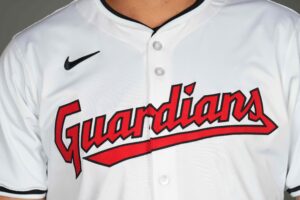Mainstream media, sports blogs, and social media are in an uproar about bringing the designated hitter to the National League. Baseball fans are split on the issue. Sometimes, in the midst of these national topics, the little guy gets lost. The little guys in this scenario are small market teams. Major League Baseball recognizes that small market teams are an integral part of the sport. It is only natural that the impact on small market teams is a part of the debate. Yet, it is often excluded in discussions. How will a universal DH impact small market teams anyway?
A DH for the Milwaukee Brewers Would be a Net Loss
Additional Cost
How much will it cost? Well, the designated hitter is the highest paid MLB position by far. Check out the average salary by position at Spotrac. As you can see, DH’s earn an Average Annual salary of $16,492,424. The second on the list is first basemen, which comes in at $5,838,944. DH almost triples the second-highest average salary. There is even talk out of Detroit to make Miguel Cabrera a full-time DH for over $30 million a year, pushing average DH salaries over $17,625,000. It’s important to look at the average salary here instead of the total salary. The total salary numbers are naturally going to be lower for 3 reasons:
1) Teams normally only carry one DH on their roster.
2) Only 15 teams use the DH.
3) Some teams DH’s are not represented by Spotrac in this list because they have a hybrid DH or DH by committee.
Clearly, the Milwaukee Brewers will be taking on a higher payroll under universal DH rules if they wish to remain competitive. $16,492,424 is the average salary for the 11 DH’s that Spotrac lists. This is a good starting point for an estimate of what a DH will cost, but it needs to be narrowed down further. Some of these players did play in the field partially, so it’s not accurate to attribute all their salary to the DH position. Others were left off the list entirely due to not enough plate appearances at the position. Finally, while the average salary is a good measure to start, our goal is not average performance. The Brewers have publicly stated that their goal is to be annual contenders, so focusing on AL playoff teams is a good way to narrow down estimated cost.
AL Playoff Teams (2014 to 2018)
The following table shows relevant data for the AL’s playoff teams for the last five years. In order to account for part-time DH’s, the player’s salary is adjusted based on the percentage of games they played at the DH position over their total games played. Any player that did not play at least 10% of their team’s games was not included in the list.

Important Notes
There are some important things to note about this table:
- The adjusted annual average DH salary for the playoff teams is $15.52 million and that does not include salary for the players that were left out.
- Any dead salary due to injury or poor performance was not included, as it was beyond the scope of this table. It should be noted that calculating it would only increase the Adj. Annual Avg. salary.
- Most of the DH’s from the AL playoff teams did not even play a full season. That is a lot of money to start with, but for a part-time player, it is even more costly.
- You can notice a recurring theme here. Many players on this list such as Nelson Cruz, Prince Fielder, Edwin Encarnacion, and Carlos Beltran show up for different teams. This further suggests that in order to be a playoff team in the AL, a quality DH is essential.
- Take a second look at the teams who did not spend a lot of money on the DH position. Teams like the 2017 Minnesota Twins and 2016 Baltimore Orioles did not make it past the Wild Card round. If you want to win in a DH league, prepare to spend heavily on it.
As you can see, $15.5 million for any contending small market team is a fair estimate. That is a significant amount of money. The Brewers would not be able to afford a player like Yasmani Grandal this year if they had to pay this excess cost.
Greater Competitive Advantage for Large Markets
As my colleague, Aaron Cornett points out in his argument against the universal designated hitter, “Rule 1.01 in the official Major League Baseball rule-book states ‘Baseball is a game between two teams of nine players each…’” This is a key point to focus on because when the number of players is raised to ten the large markets benefit.
It is no secret that large market teams have a distinct advantage at every roster position. They can afford the best at each and every spot in the order and have plenty of room to spare for multi-million dollar mistakes. Meanwhile, small and mid-market teams have to pick and choose what positions to pay the high salaries to, oftentimes with little room for error. Therefore it is elementary logic that increasing the number of roster positions gives them yet another opportunity to exercise that advantage. There is a competitive gap between small and large markets the way things are now. Adding a 10th player to the starting lineup makes this gap even larger.
It’s easy to look at the Brewer’s lineup, recognize how dramatically improved it would be with a DH hitting for the pitcher, and use it to argue on behalf of American League rules. However, that really does not tell the whole story. The question is not, “Will the offensive lineup improve with a DH?” Of course, it will. The question is “How much will the offensive lineup improve in relation to the rest of the National League with a DH?” For reasons stated above, this is the point where the large markets will gain ground simply because they can afford it. If a small market team like the Brewers decide to spend heavily on a DH it just means they have to lose a quality player elsewhere.
Strategy Displacement Widens the Competitive Gap
Some strategy is removed when a DH is rostered. It is commonly stated that the DH rule takes away the art of pinch-hitting for the pitcher. This is true, but there is more than that. When a team has to keep a DH, it displaces someone else on the roster. The 25th man on the roster is where strategy can be used to bridge the competitive gap.
The Brewers employed a 13-man pitching staff last year while relying heavily on their bullpen. They did so with great success. The Crew was fifth in all of baseball with a 3.73 ERA, fifth in BAA at .233, and seventh with an OPS of .696. Taking into account Miller Park is a hitter’s park, these are great rankings. When considering Spotrac lists the Brewers 18th in the league in payroll for pitchers last year, it is downright phenomenal. Bullpen players and initial out-getters that only have to go through the order twice are much cheaper than high-end starters. While the MLBPA’s counterproposal to the league did include raising the roster size to 26 it also required that only 12 pitchers be kept, so this would greatly hinder the Brewers cost-effective pitching strategy.
Meeting New Challenges Requires Flexibility
Strategy displacement doesn’t stop with a 13-man pitching staff. Craig Counsell talks in his press conference on MLB.TV how each season presents a new set of challenges.
Counsell and Stearns may decide to utilize a platoon player, defensive specialist or another bench bat for a long period of time. They cannot do this if they are forced to use a roster spot on the DH. The less roster flexibility a manager has, the fewer opportunities there are to meet the challenges. Ingenuity costs far fewer dollars to a team than high salaried players do. This is one area where a small market team can thrive. The NL Central champion Brewers are the perfect example of this.
Stadium Effect
Imagine how much of an advantage the Rockies and Diamondbacks would have if they added a power-hitting DH to their high altitude stadiums. The stadiums already give them a sizeable advantage. Colorado and Arizona’s home field advantage will be amplified further. Unless a salary cap is adopted in baseball, the large market teams will continue to have a greater advantage in the AL than they do the NL.
Injuries to Pitcher are Overemphasized
There are some valid points for the Brewers to carry a DH. Our own Pete Schwichtenberg gives his analysis here. Jimmy Nelson injuring his shoulder diving into first and Junior Guerra straining his calf are both fresh in the minds of fans right now. Consequently, there is a recency bias we have to ignore.
Milwaukee has been in the National League for over twenty years now and the amount of pitchers lost due to hitting or baserunning is relatively small. Fans have seen just as many pitchers hurt themselves with freak accidents. Do you remember knuckleballer Steve Sparks? He infamously dislocated his shoulder trying to tear a phone book in half. The very popular mom-joke teller, now San Francisco Giant, Will Smith tore his LCL taking off his shoe in the shower. (His mom says it took a long time to “heel”).
Yes, some pitchers will get hurt hitting or running the bases. However, when they happen at the same rate as freak injuries the number is relatively low. Thus, they are not as frequent as DH advocates make them out to be. The Milwaukee Brewers and other small market teams in the National League benefit greatly by keeping things the way they are.
DH for Brewers = Net Loss
The DH brings a high cost with it that small market teams cannot afford, an even wider competitive gap, and the displacement of strategies small markets successfully use to thrive. It simply is not worth it to eliminate freakishly low injury rates from pitchers hitting and fielding. It just makes it harder to win a championship. The drawbacks far outweigh the perceived benefits. A universal DH would be a net loss for small market teams.
Main Photo:
Embed from Getty Images






